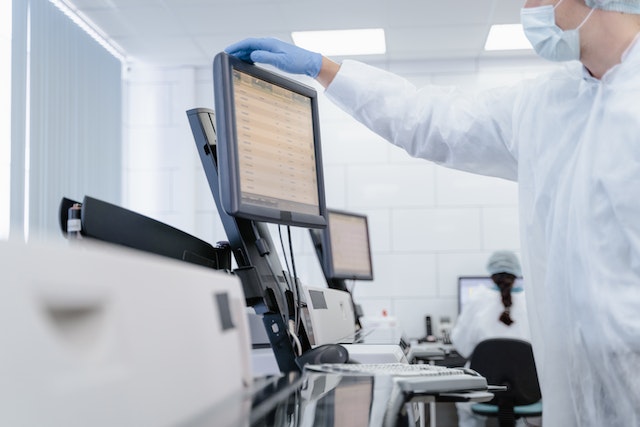Frequently Asked Questions
Data analysis is a multi-step process including examining, cleaning, exploring, and transforming data to discover useful information, and support decision-making. This part will give you an introduction to some basic tools (Jupyter Notebook, Google Colab.) and libraries (Numpy and Pandas) that you will use throughout the bootcamp.
Python is the favorite programming language among data scientists, and it is not a coincidence. Large communities and libraries, ease of use, open source, flexibility, and integration with other programming languages are just some of the advantages of Python. In this part, you will start from the basics of Python such as data structures and you will be able to run your independent analysis using it.
Unlock the potential of Python as you explore various data types and gain hands-on experience through practical examples and exercises. Whether you're a beginner or looking to expand your coding skills, this content is your gateway to becoming a confident Python programmer.
Discover why data exploration is the heartbeat of every successful data science project. It goes beyond mere data collection and dives deep into uncovering the secrets hidden beneath the surface. From identifying outliers and missing values to identifying trends and making data-driven decisions, this dynamic process holds the key to transforming raw data into actionable insights.
As we embark on a transformative data journey, where data exploration reigns supreme. Witness firsthand how it fuels innovation, drives business growth, and empowers decision-makers to make informed choices.
The relational database is a part of the day-to-day work of a data scientist. SQL (Structured Query Language) is a programming language used to manage and manipulate relational databases. This part will help you to understand basic queries, aggregations, joins, subqueries, and case statements. To do that you will use PostgreSQL.
Statistics is an essential part of data science. A good data scientist should combine, along with other hard and soft skills, coding, and statistical knowledge to come up with a reliable model.
This course covers the essentials of statistics, including the foundations, key concepts, and practical applications. Delve into the world of distributions and probabilities, gaining insights into various probability distributions and their real-world significance. With hands-on exercises and examples, you'll develop the skills to analyze and interpret data with confidence.
As a data scientist, you will have to design many experiments. So, you can think of this part as a warm-up for your real challenges. Having learned the main statistical test such as the t-test and A/B test, you will be ready to run your data-dependent project.
Up to this point, you learn many things and now it is time to present your skills. In the first capstone, you will work on a project that will be assigned to you by Leveragai. This project will be mainly based on data exploration, and it also helps you to sharpen your Python, statistics, and analytical skills.
To be able to prepare you for the real data science interview, we created two mock interviews during this program. The mock interview is held by an industry expert with a 1-on-1 session. You will be asked several questions about the topics you have covered so far. This is the first one and you must take and pass it to move forward. This first mock interview is designed to compare the level of knowledge you have and the one you are supposed to have. You will be asked coding, statistics, and design questions.
Here comes the part that we have prepared so far. This is the very first course in machine learning. In this part, you will learn the basic but most important concepts of machine learning that you will refer to along the way. These concepts include but are not limited to introduction to machine learning and supervised/unsupervised learning, train-test split, cross-validation, overfitting, and bias-variance trade-off.
Regression models are statistical models that are used to predict a numerical value. This part of the curriculum will give an in-depth understanding of regression-based modeling. You will first learn the theory of these models and see how you can apply it using Python. Having talked about over and underfitting. Regularization will be discussed via the ridge, lasso, and elastic net regression.
Under supervised learning title, you will also learn classification models that are types of machine learning models used in data science to predict the categorical class or label of an input data point. Having categorical classes in the data is not something rare, so it is better to get used to applying classification models.
There are several types of machine learning models that can be applicable to classification and regression and, after discussing linear regression, you will be familiar with logistic regression, decision trees, random forests, and support vector machines, and boosting algorithms.
Having completed the regression and classification models, now you know how to run a machine learning model. Combining your data exploration, Python, and machine learning modeling knowledge, you are all set to run your first machine learning modeling project as a second capstone. Leveragai will provide the project and you will apply your skill to tackle it.
What happens if data does not include any labels? It means you should run an unsupervised learning model. An unsupervised learning algorithm can be used for clustering, anomaly detection, and dimension reduction. In this part, you will learn how unsupervised learning models work. As always, you will learn the theory of KMeans, DBSCAN, and hierarchical clustering methods and apply them.
This is the very first part of your specialization in CRM. This part includes, but is not limited to, an introduction to CRM analytics, creating stories with visualization, and correlation and parametric and non-parametric independence tests.
In the introduction to CRM part, you will learn how and why we need CRM analytics as well as important tools used in CRM analytics. What comes next is to tell a story using visualization. It is quite important, especially when sharing your findings with non-experts such as your clients or executives.
This part concludes with correlation and independence tests. As CRM analytics is all about delighting your customers, companies try different campaigns to achieve whatever their goal is. To properly design these experiments, there are certain statistical tools that one needs to be familiar with. In the final section of the first part, you will learn effective ways to use these tools.
This part is devoted to broad and important topics. P&L analysis and predictive analytics Both are incredibly broad and important topics and are the cornerstones of data-driven decisions. As a CRM data scientist, these two topics are of paramount importance and will be essential in helping you succeed in this field.
In P&L analysis, you will learn how to analyze financial statements and find the most important as well as outlier items in these statements. This analysis enables you to detect effective and ineffective parts of the unit (branch, restaurant, hotel, etc.).
Predictive analytics is a set of techniques that a CRM data scientist must have at her disposal. Predictive analytics is so broad that you need to restrict our attention. So, you will learn time series analysis to forecast future sales and customer lifetime value as a part of predictive analytics.
The final part of the CRM specialization is devoted to sentiment analysis and churn analysis.
Sentiment analysis helps you process and better assess customer feedback. This is the backbone analysis for improving the customer experience. You will run a sentiment analysis using customer comments.
What comes next is the churn analysis. In today's competitive world, it is quite important and less costly to keep your customers engaged. However, it is a challenging task. Churn analysis provides you with a unique tool to better understand and predict customer behavior so that you can initiate and restructure your marketing campaign.
An important part of a data scientist’s job is to bring research questions and in this third and final capstone, you will see how a real research question can be emerged and be tackled. So, you will first work on the research question that you want to address, check if data is available, and, upon approval of your mentor, you will start working on it.
In this second mock interview, you will be tested on what you have learned so far with a 1-on-1 session. An industry expert mentor will ask you several questions and gauge your level of knowledge and provide you feedback so that you better understand if you are ready for the real data science interviews.
Congrats! Now, you will be paired with a company to accomplish a data science or analytics project. During this internship, you will equip yourself not only with theoretical skills but also with real-life challenges. This internship will take at least three months.
Once you have finalized all the steps given above, you deserve to graduate. A certification will be awarded to you by Leveragai.








